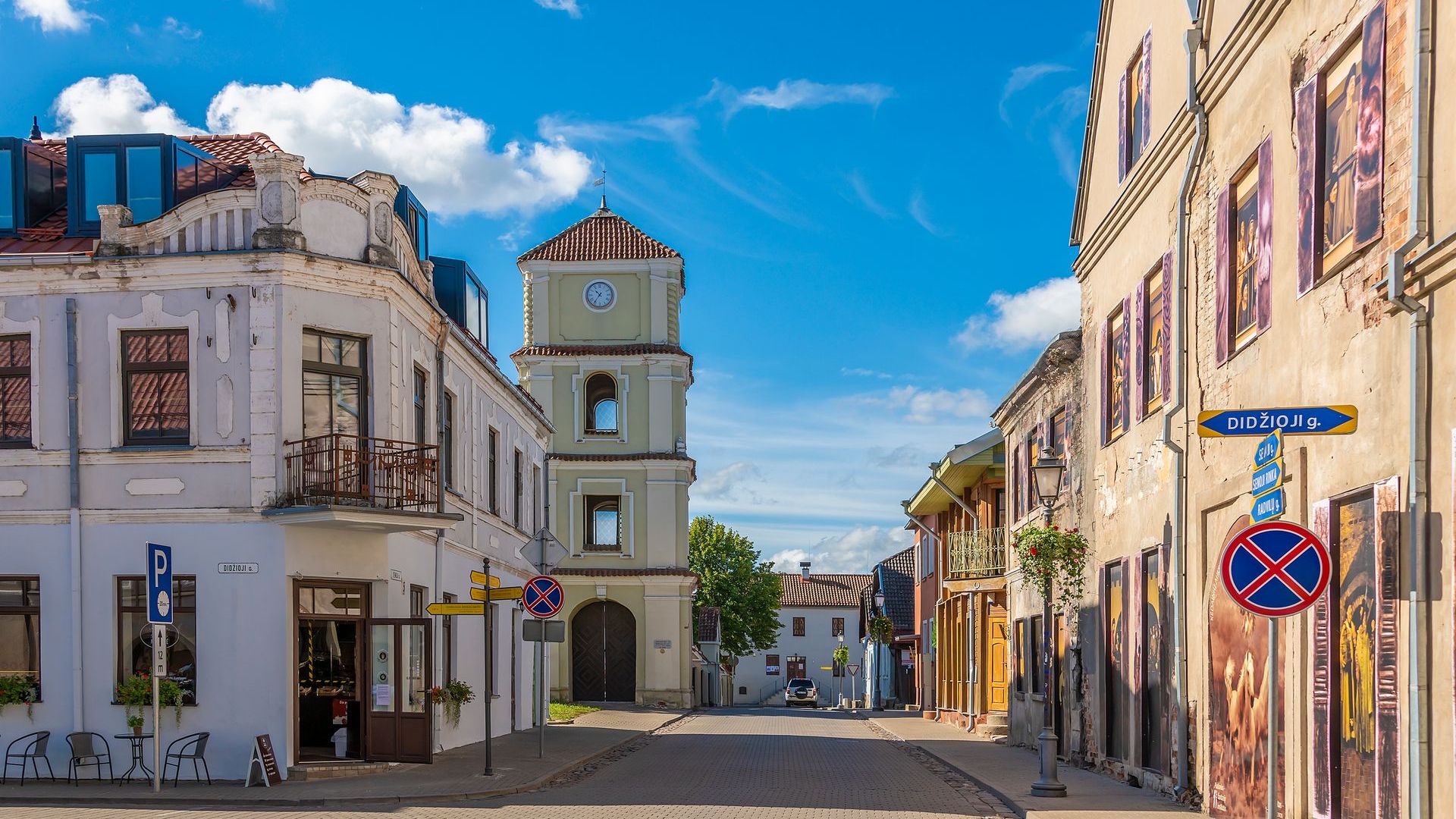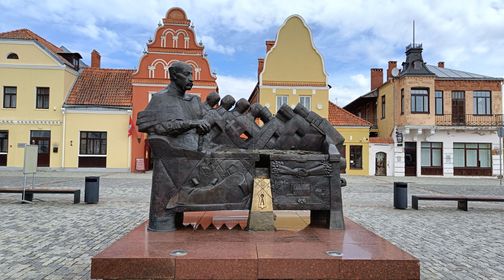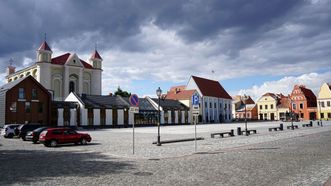
Kėdainiai is a town located in the very centre of Lithuania. The oficially established geographical centre of Lithuania is only a few kilometres away. It is one of the oldest cities in Lithuania, dating back from 1372, when the name of Kėdainiai was first mentioned in the Livonian Chronicle of Hermann de Wartberge. In the 15th century, the town became a regional trading centre and was referred to as oppidum – a town near a manor. For around 300 years, Kėdainiai belonged to Lithuanian noblemen Radvilas, one of the most powerful and influential noble families in the Grand Duchy of Lithuania. In the 17th century, it was one of the religious, cultural and educational centres for Protestants, while economic and religious freedom provided by Radvilas attracted foreign merchants and craftsmen to Kėdainiai.
In the first half of the 17th century, the town was inhabited by Scots. The western part of the town, called Jonušava or "New Kėdainiai", was inhabited by German Lutherans. A Jewish community gathered around the Old Market Square. The future Gaon of Vilnius Elijahu, a Jewish thinker well-kown around the world, studied Talmud in Kėdainiai. In the middle of the 17th century, a small Orthodox community established itself in the southern part of the town. Part of the town on the left bank of Nevėžis River had an established Catholic Church of St. George, and was an island of Catholicism. Today, the Church of St. George is the oldest remaining brick building in the town and one of the oldest churches in Lithuania. In the 17th century, a Protestant Gymnasium was established in Kėdainiai, where lessons were taught by famous scholars of that time. The Gymnasium had a printing house where "Knyga nobažnystės krikščioniškos" was published in Lithuanian, which was one of the greatest publication in the 17th century.
Kėdainiai is humorously titled as the cucumber capital of Lithuania. Gardening became popular in the 19th century, particularly the cultivation of cucumbers, while the majority of gardeners were Jews. Cucumber plantations on the banks and terraces of Nevėžis River were also abundant during the interwar period. Even though the years during and after the war dealt a serious blow to the cucumber business, cucumber growers of Kėdainiai have succesfully survived to this day, and made the cucumber a symbol of our town.
The cultural diversity that existed at a certain time created a unique town identity, and the well-preserved Old Town of Kėdainiai reflects the traditions of the architecture of various nations and confessions. Today, Kėdainiai Old Town, which is one of the seven Old Towns in Lithuania, is an urban monument of national importance. The Old Town has preserved its old road network, trading squares, as well as sacral, residential and public buildings of the 16th-19th century.
There are also various museums, cafes and restaurants, where you will find many cosy places to have a snack and a cup of coffee after a pleasant walk around Old Town. Cucumber festival is organized in Kėdainiai, which is a unique event not found anywhere else in Lithuania. A town event is organized in August, where, for several years in a row now, the town's European spirit is lifted by a jazz festival "Broma Jazz".
Points of interest
44
Food
25
Accomodation
8
Loading...
©2025 trip.lt





















